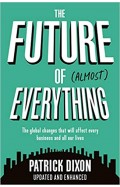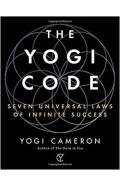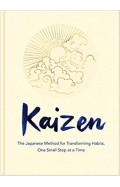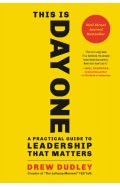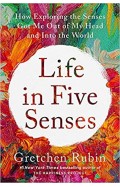- Home
- Books
- Categories
- Non Fiction
- Education and Reference
- Science
- The Geography of Thought - How Asians and Westerners Think Differently
The Geography of Thought - How Asians and Westerners Think Differently
By: Richard E. Nisbett
-
Rs 2,515.50
- Rs 2,795.00
- 10%
You save Rs 279.50.
Due to constant currency fluctuation, prices are subject to change with or without notice.
'The most influential thinker, in my life, has been the psychologist Richard Nisbett. He basically gave me my view of the world.'
-Malcolm Gladwell
"One of the world's leading thinkers" Daily Telegraph
When Richard Nisbett showed an animated underwater scene to his American students, they zeroed in on a big fish swimming among smaller fish. Japanese subjects, on the other hand, made observations about the background environment...and the different "seeings" are a clue to profound underlying cognitive differences between Westerners and East Asians.
As Professor Nisbett shows in The Geography of Thought people actually think - and even see - the world differently, because of differing ecologies, social structures, philosophies, and educational systems that date back to ancient Greece and China, and that have survived into the modern world. As a result, East Asian thought is "holistic" - drawn to the perceptual field as a whole, and to relations among objects and events within that field.
By comparison to Western modes of reasoning, East Asian thought relies far less on categories, or on formal logic; it is fundamentally dialectic, seeking a "middle way" between opposing thoughts. By contrast, Westerners focus on salient objects or people, use attributes to assign them to categories, and apply rules of formal logic to understand their behaviour.
'The most influential thinker, in my life, has been the psychologist Richard Nisbett. He basically gave me my view of the world.'
-Malcolm Gladwell
"One of the world's leading thinkers" Daily Telegraph
When Richard Nisbett showed an animated underwater scene to his American students, they zeroed in on a big fish swimming among smaller fish. Japanese subjects, on the other hand, made observations about the background environment...and the different "seeings" are a clue to profound underlying cognitive differences between Westerners and East Asians.
As Professor Nisbett shows in The Geography of Thought people actually think - and even see - the world differently, because of differing ecologies, social structures, philosophies, and educational systems that date back to ancient Greece and China, and that have survived into the modern world. As a result, East Asian thought is "holistic" - drawn to the perceptual field as a whole, and to relations among objects and events within that field.
By comparison to Western modes of reasoning, East Asian thought relies far less on categories, or on formal logic; it is fundamentally dialectic, seeking a "middle way" between opposing thoughts. By contrast, Westerners focus on salient objects or people, use attributes to assign them to categories, and apply rules of formal logic to understand their behaviour.
Mindware: Tools for Smart Thinking Paperback
By: Richard E. Nisbett
Rs 2,290.75 Rs 2,695.00 Ex Tax :Rs 2,290.75
The Geography of Thought - How Asians and Westerners Think Differently
By: Richard E. Nisbett
Rs 2,515.50 Rs 2,795.00 Ex Tax :Rs 2,515.50
Zubin Mehta: A Musical Journey (An Authorized Biography)
By: VOID - Bakhtiar K. Dadabhoy
Rs 892.50 Rs 1,050.00 Ex Tax :Rs 892.50
The Origins of Political Order From Prehuman Times to the French RevolutioN
By: Francis Fukuyama
Rs 4,045.50 Rs 4,495.00 Ex Tax :Rs 4,045.50
Manning Up: How the Rise of Women Has Turned Men into Boys
By: Kay Hymowitz
Rs 845.75 Rs 995.00 Ex Tax :Rs 845.75
The Obama Syndrome: Surrender At Home War Abroad
By: Tariq Ali
Rs 1,100.75 Rs 1,295.00 Ex Tax :Rs 1,100.75
The Quest For Meaning: Developing A Philosophy Of Pluralism
By: Tariq Ramadan
Rs 1,185.75 Rs 1,395.00 Ex Tax :Rs 1,185.75
No similar books from this author available at the moment.
Tiny Living Spaces - Innovative Design Solutions
By: Lisa Baker
Rs 12,745.75 Rs 14,995.00 Ex Tax :Rs 12,745.75
The Brain's Way of Healing - remarkable discoveries and recoveries from the frontiers of neuroplasticity
By: Norman Doidge
Rs 3,595.50 Rs 3,995.00 Ex Tax :Rs 3,595.50
InStyle Ultimate Beauty Secrets: The Best Tips, Tricks, and Shortcuts to Create Your Perfect Look
By: The Editors of InStyle
Rs 1,695.75 Rs 1,995.00 Ex Tax :Rs 1,695.75
Speak Easy: Connect with Every Conversation
By: Lou Diamond
Rs 4,500.75 Rs 5,295.00 Ex Tax :Rs 4,500.75
Curious George: Scavenger Hunt (I Can Read Comics Level 2)
By: H. A. Rey
Rs 1,075.50 Rs 1,195.00 Ex Tax :Rs 1,075.50
Timmy Failure: The Cat Stole My Pants
By: Stephan Pastis
Rs 1,795.50 Rs 1,995.00 Ex Tax :Rs 1,795.50
Celebrate with Cupcakes: Designs and Techniques for Creating 30 Gorgeous Cupcakes
By: Lindy Smith
Rs 1,747.50 Rs 3,495.00 Ex Tax :Rs 1,747.50
The Meditator's Dilemma - An Innovative Approach to Overcoming Obstacles and Revitalizing Your Practice
By: Bill Morgan
Rs 1,270.75 Rs 1,495.00 Ex Tax :Rs 1,270.75
Platonic: How Understanding Your Attachment Style Can Help You Make and Keep Friends
By: Marisa G. Franco
Rs 2,846.25 Rs 3,795.00 Ex Tax :Rs 2,846.25
365 Ways to Be Happy: Inspiration and Motivation for Every Day
By: Summersdale
Rs 1,525.75 Rs 1,795.00 Ex Tax :Rs 1,525.75
The Future of Almost Everything - Paperback
By: Patrick Dixon
Rs 2,800.75 Rs 3,295.00 Ex Tax :Rs 2,800.75
The Yogi Code: Seven Universal Laws of Infinite Success
By: Atria/Enliven Books
Rs 1,015.75 Rs 1,195.00 Ex Tax :Rs 1,015.75
Don't Say Um - How to Communicate Effectively to Live a Better Life
By: Michael Chad Hoeppner
Rs 3,436.00 Rs 4,295.00 Ex Tax :Rs 3,436.00
101 Essays that will Change the way You think
By: Brianna Wiest
Rs 1,795.50 Rs 1,995.00 Ex Tax :Rs 1,795.50
Influential Woman : A Fresh Approach to Tackling Inequality and Leading Change at Work
By: Dion Johnson
Rs 2,545.75 Rs 2,995.00 Ex Tax :Rs 2,545.75
Crooks: The Stories Behind the Headlines
By: Paul Williams
Rs 3,865.50 Rs 4,295.00 Ex Tax :Rs 3,865.50
Kaizen: The Japanese Method for Transforming Habits, One Small Step at a Time
By: Sarah Harvey
Rs 3,415.50 Rs 3,795.00 Ex Tax :Rs 3,415.50
Alicess Adventures in Wonderland and Through the Looking Glass
By: Miles Kelly Publishing
Rs 1,197.50 Rs 2,395.00 Ex Tax :Rs 1,197.50
This Is Day One: A Practical Guide to Leadership That Matters
By: Drew Dudley
Rs 1,695.75 Rs 1,995.00 Ex Tax :Rs 1,695.75
Life in Five Senses - How Exploring the Senses Got Me Out of My Head and Into the World
By: Gretchen Rubin
Rs 3,225.75 Rs 3,795.00 Ex Tax :Rs 3,225.75
INTERNATIONAL PRIMARY COMPUTING STUDENT'S BOOK - Stage 2
By: Dr Tracy Gardner
Rs 2,245.50 Rs 2,495.00 Ex Tax :Rs 2,245.50
Zubin Mehta: A Musical Journey (An Authorized Biography)
By: VOID - Bakhtiar K. Dadabhoy
Rs 892.50 Rs 1,050.00 Ex Tax :Rs 892.50
Mindware: Tools for Smart Thinking Paperback
By: Richard E. Nisbett
Rs 2,290.75 Rs 2,695.00 Ex Tax :Rs 2,290.75
The Geography of Thought - How Asians and Westerners Think Differently
By: Richard E. Nisbett
Rs 2,515.50 Rs 2,795.00 Ex Tax :Rs 2,515.50













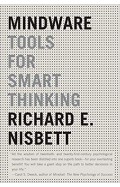

-120x187.jpg?q6)





-120x187.jpg?q6)










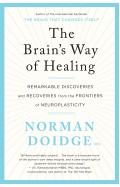














-120x187.jpg?q6)
